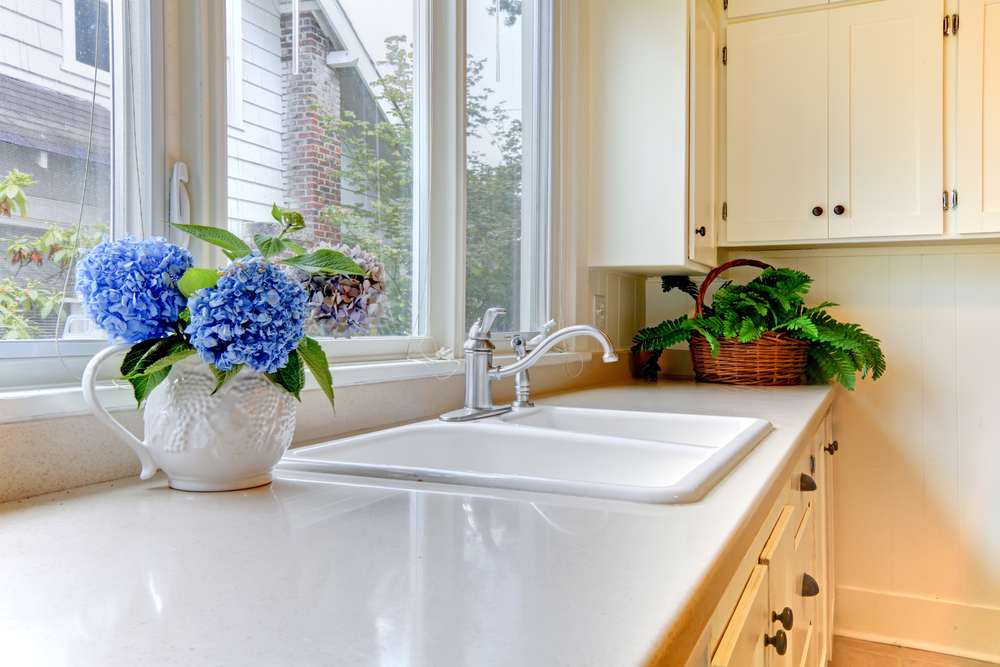
If your kitchen cabinets have water damage, it’s probably right below the sink.
Some of us are a little too aggressive when we wash our hands, dishes or when we’re throwing away wet containers. Even the highest quality wooden cabinets need a little extra support to prevent water damage, especially if the area is consistently damp over several years.
Water damage can have many symptoms, from severe warping to a washed-out finish. Blistering, peeling and a dull sheen are all signs of possible water damage.
Sometimes water damage can be a sign of weakness in the finishing process of cabinets. A good varnish or lacquer can prevent water damage, but not if it isn’t applied correctly. Some manufacturers only apply two layers (3 millimeters of thickness), but about 5.5 mm is recommended, and you can only achieve this with a minimum of three layers. The end grain of a cabinet door and the joints are especially prone to damage when lacquer isn’t thick enough.
End grain (the frame of a cabinet that holds the panel in place) has a lot of open pores that need to be filled with finish—otherwise they’ll get filled with water! Water can get trapped in wood well below the surface, condensing below the finish in a way similar to what can happen with skylights.
Eventually it will blister through, exposing raw wood that’s even more prone to water damage. It’s a vicious cycle.
Water also penetrates where the panel and frame meet at the cabinet door bottom where water can trickle down and sit on the edge. The droplets settle into the frame groove, get absorbed into the raw wood below and cause the same blistering problem. Even if you have a nice, thick lacquer, always wipe up water immediately just to play it safe.
Investing in brand-new cabinets? Prevent damage by making sure your cabinet maker uses a spray lacquer, paste wax or varnish. Wax goes on the easiest, but needs to be re-applied twice per year. Only paste wax should be used. Sprays and varnishes last much longer, but are tricky to apply and must be done outdoors for safety.
A cabinetmaker should readily offer this service and build it into your quote for custom cabinets.
Old and/or damaged cabinet doors require a spray finish to complete their restoration. Coating them first with special paint thinner, and then drying, sanding and spot staining in the case of raw spots might be necessary. A final staining/painting followed by a spray finish completes the job.
If this sounds like a lot of work, it is! That’s why most home renovators prefer to have a professional take care of cabinet door damage.
For all your custom cabinet needs, whether you’re building, renovating or want your kitchen cabinets restored to their glory days, call Swirl Woodcraft to connect with a local cabinet expert.